what happens to my blood after i donate

It goes on water ice
The initial needle-poke part of donating blood is easy and typically takes less than xv minutes. But earlier your claret tin can be used past someone else, it takes some surprising twists and turns, starting with getting iced: The claret donation center staff places your drove handbag in a cooler with the others until the donations can be taken for testing and processing; notation that the staff will also ready aside a tube of your claret for additional testing. They practice this with every donor.
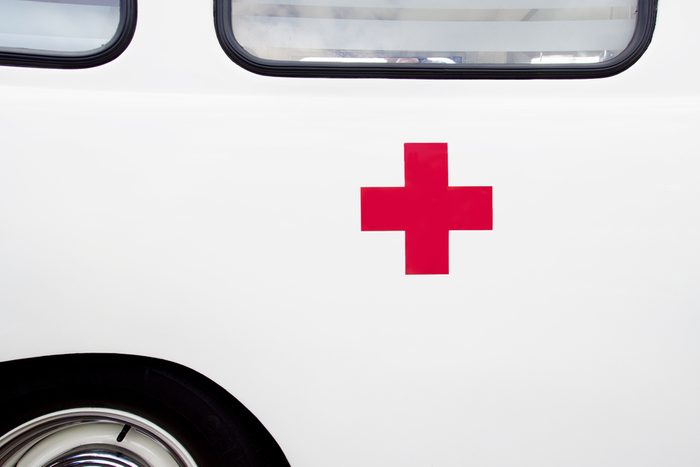
At the Cherry Cross
Upon arrival at the Reddish Cantankerous blood processing facility, the collection numberless are unpacked and sorted based on the fourth dimension the blood was donated. "The bags are separated by times, based on the type of product that will be manufactured (or separated into)," says Pampee Young, Doc, PhD, chief medical officeholder of the American Red Cross Biomedical Partitioning. The samples are sent for testing in a laboratory—the technicians are looking for viruses, leaner, and other potential infections. (Find out why everyone should know their claret type.)
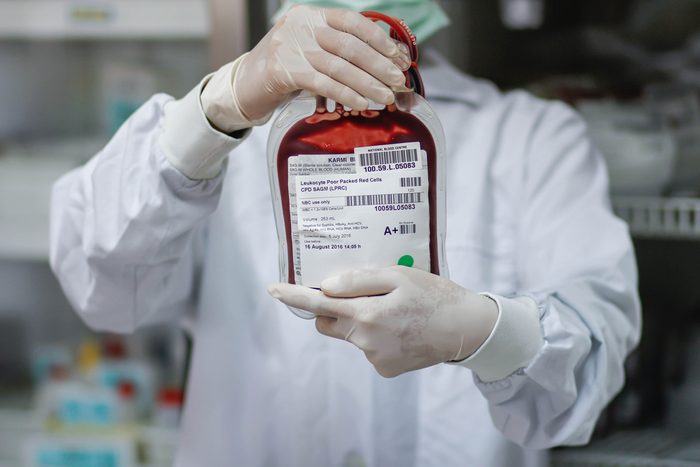
Blood is separated into three components
"Most whole blood donations are separated into transfusable components: cherry-red cells, platelets, and plasma," says Dr. Immature. Technicians use centrifuges to spin the blood at loftier speeds and separate the three components. "The testing and processing steps take approximately three days to complete," says Dr. Young. Each of the 3 blood components can then be used to save up to three different people.
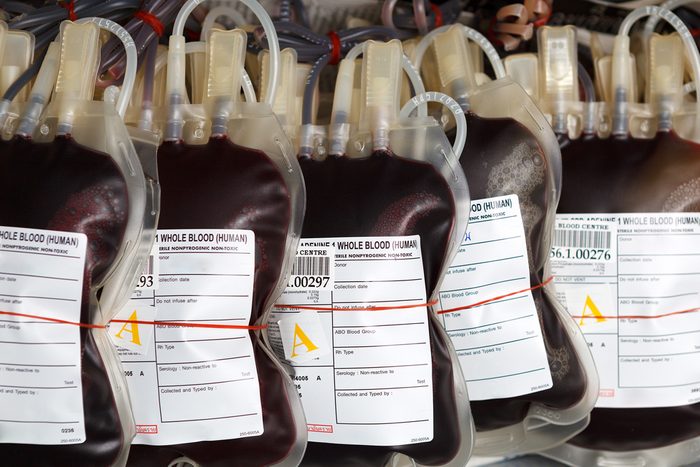
Red blood cells go in the refrigerator
Once they're separated out, red blood cells tin be stored in a refrigerator for up to 42 days. "Patients who benefit most from transfusion of carmine blood cells include those with chronic anemia resulting from kidney failure or gastrointestinal bleeding, and patients with astute blood loss resulting from trauma," says Dr. Young. "They can also be used to treat blood disorders such as sickle cell disease." (Discover out why blood is the color cherry.)
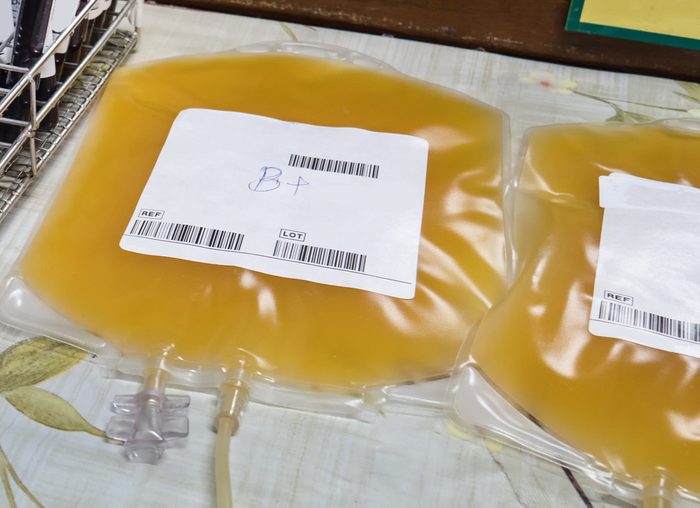
Plasma is frozen
Plasma is placed in a flash freezer, which is -27 degrees; it'south frozen solid in around 45 minutes. "Plasma is frozen inside 24 hours of being donated giving it a shelf-life of 1 year," says Dr. Young. "Plasma is commonly transfused to trauma, burn, and shock patients, as well as people with severe liver disease or multiple clotting factor deficiencies."

Platelets sit down out on trays
As the plasma is freezing, the platelets are put on trays to sit undisturbed for at least one hour. The technicians place the platelets in a machine that gently moves back and along to prevent bunching and clumping. "Platelets have a shelf-life of just five days," says Dr. Young. "They are most often used during cancer treatment as well as surgical procedures such equally organ transplant."
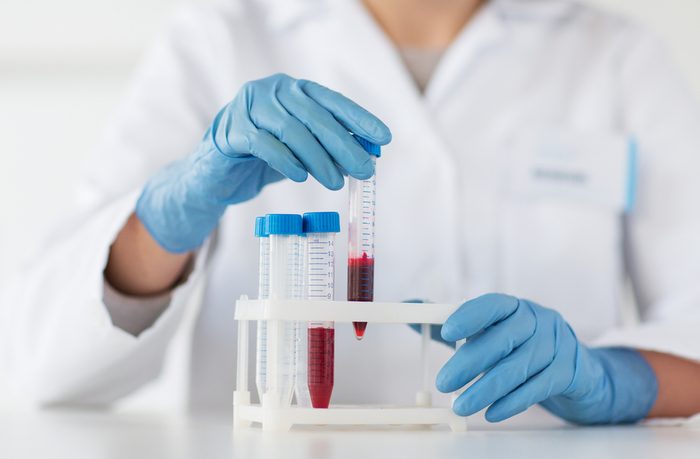
Sample tube analysis
While the 3 blood components from your blood undergo their various processing, your examination-tube sample is being tested and screened for infectious diseases like hepatitis and HIV. Your blood volition exist kept separate until the test results reach the processing facility—usually within 24 hours. If y'all exam positive for whatever infections, your donation is discarded and y'all'll exist informed of any infection. (Don't miss what your blood type reveals about y'all.)

The hospital is the next finish
When your donation gets the "all clear," the Red Cross ships out the various blood products to hospitals all across the United States and U.Due south. territories, as well as the Mariana Islands, Republic of the marshall islands, and the Un Mission Hospital in Haiti. "Hospitals determine their inventory needs based on the types of patients and their specific claret blazon and the required claret product (reddish blood cells, platelets, and plasma) needed for handling," says Dr. Immature.
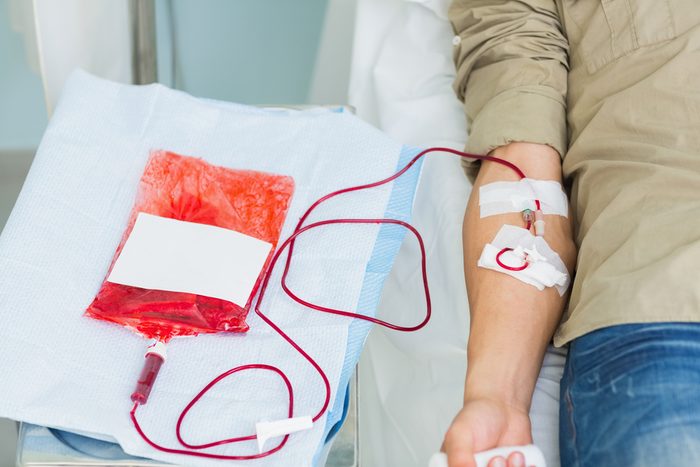
Your blood helps relieve someone'southward life
Once your donation reaches a hospital, doctors must decide which patients accept the most pressing need. According to the Red Cantankerous, someone in the United States requires a blood transfusion every two seconds—that's why information technology'southward then crucial to donate if you're able. Each time y'all do donate, you take the potential to assist keep three different people alive. Learn more about donating blood past visiting RedCrossBlood.org.
Sources
- Pampee Young, Md, PhD, Principal Medical Officeholder of the American Scarlet Cross Biomedical Division
![]() Medically reviewed past
Medically reviewed past
Originally Published: May 27, 2020
Source: https://www.thehealthy.com/healthcare/what-happens-blood-after-donation/
Post a Comment for "what happens to my blood after i donate"